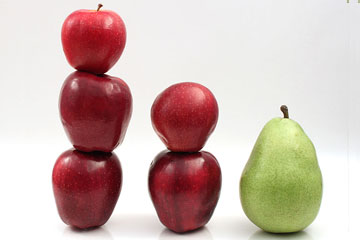
Nutrition for Pain-Free Living
Those with muscle pain, fatigue, and other symptoms of chronic aches and discomfort may turn to diet and lifestyle changes for relief. Many people with chronic pain in the body often have food sensitivities that may not show up in food allergy or intolerance tests. It may seem strange to think about it, but it is possible that some of the foods that we consume may contribute to our pain and stiffness. Even something such as the removal of gluten from one’s diet who has fibromyalgia is becoming a potential dietary intervention for clinical improvement, according to a study published in the January-February 2015 journal Clinical and Experimental Rheumatology (1).
Table of Contents
Section 1: Eating For Arthritis
Section 2: Cancer-Related Pain
Section 3: Fight Fibromyalgia with Food
Section 4: Headaches
Section 5: Low Back Pain and Neck Pain
Section 6: Chronic Neuropathic Pain Conditions
In this article, you will find dietary recommendations regarding some common conditions associated with pain and discomfort. However, there are some common nutrition guidelines that will prove beneficial to most types of pain-related diseases people are suffering from, because they will supply the body with optimal nutrition. These include:
- Eat Whole Foods at Every Meal– Fresh foods do not contain additives, preservatives or fillers that might contribute to irritable bowel syndrome (IBS), fibromyalgia, or cause pain in the body. Fresh, whole foods are those that have not been through extensive processing and are still identifiable in their natural state. Think fruits, vegetables, beans, etc.
- Choose Organic Foods Whenever Possible – They are grown without toxic chemicals and pesticides that can trigger pain in the body. An April 2010 study in the journal Alternative Medicine Review, reported that organic foods provided significantly higher levels of vitamin C, iron, magnesium, antioxidant phytochemicals, and phosphorous than their non-organic counterparts (2). If you are unable to purchase organic foods, always wash your produce thoroughly to help remove pesticide residue.
- Avoid consuming a lot of caffeine – Drinking too much caffeine may boost energy, however it may also cause more harm than good. According to the National Institutes of Health (NIH), problems can include sleep difficulties, headaches, faster heartbeat, dehydration, and caffeine dependency (3).
- Omega-3 – Getting plenty of omega-3 essential fatty acids is important, because they are good for the heart, brain, and for helping to reduce inflammation in the body. Foods that are high in omega-3 fatty acids include fish, walnuts, flaxseed, and some leafy vegetables. The NIH reports that the types of omega-3 found in seafood and fish oil, EPA and DHA, may help relieve symptoms of rheumatoid arthritis (4).
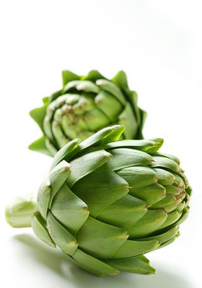
Choosing Fish, Mercury Concerns
Choosing high quality sources of fish to include in your diet is ideal, because they are high in omega-3 fatty acids, which help to reduce inflammation in the body (5). Good sources to choose include salmon, sardines, and anchovies. Although fish plays an important role in the diet, there can be concerns when it comes to the amount of mercury that you consume. The Environmental Protection Agency (EPA) advises that to get the benefits and minimize the mercury exposure stick to eating fish that is low in mercury, and to limit eating fish that is higher in mercury (6).
Low Mercury Eat up to two meals per week:
Shrimp* Salmon (canned & fresh) * Canned light tuna* Herring* Polluck* Catfish* Anchovies* Sardines* Domestic Crab* Ocean Perch* Oyster* Scallop* Pacific Sole* Squid* Tilapia* Freshwater Trout* Whitefish*
Moderate Mercury Eat six servings or less per month:
Bass (Striped, Black) * Carp Cod (Alaskan)* Croaker (White Pacific) Halibut (Atlantic)* Halibut (Pacific) Jacksmelt (Silverside) Lobster Mahi Mahi Monkfish* Perch (Freshwater) Sablefish Skate* Snapper* Tuna (Canned chunk light) Tuna (Skipjack)* Weakfish (Sea Trout)
High Mercury Eat three servings or less per month:
Bluefish Grouper* Mackerel (Spanish, Gulf) Sea Bass (Chilean)* Tuna (Canned Albacore) Tuna (Yellowfin)*
Highest Mercury Avoid eating:
Mackerel (King) Marlin* Orange Roughy* Shark* Swordfish* Tilefish* Tuna (Bigeye, Ahi)* (7, 8)
Beware Of Gluten And Yeast – Both of these common ingredients have been shown to add to pain in the body. They are both found in a variety of breads, baked goods, cakes, cookies, pies, and processed foods. A two-week gluten free trial can help you to determine if you have gluten sensitivity or actual celiac disease. Gluten sensitivity, according to the May 2015 issue of the journal Reumatologia Clinica, reports that non-celiac gluten sensitivity has symptoms similar to Celiac Disease, which has symptoms common to such conditions as musculoskeletal pain (9).
Are You Lactose Intolerant? The NIH reports that 30-50 million adult Americans have lactose intolerance, with symptoms of it including abdominal pain (10). Those with the condition simply lack the lactase enzyme to digest the lactose (sugar) in dairy foods. It can lead to a response in the immune system that can trigger inflammation and pain in the body.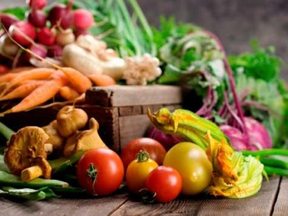
Cut Back On Processed Carbohydrates – Not all carbohydrates are created equally. Eating good quality protein and fats with carbohydrates helps keep blood sugar stabilized. Healthy carbohydrates include things like quinoa, and whole wheat bread, while unhealthy ones include such things French fries and potato chips.
Avoid Aspartame – Aspartame is an artificial sweetener found in everything from soft drinks and sugar-free desserts to salad dressings and frozen foods. It is not dangerous to most people, if consumed in moderation. In a 2013 issue of the journal Folia Neuropathologica, they report that aspartame is considered a highly hazardous compound that contributes to reduced levels of dopamine and serotonin in the brain, and it can contribute to the formation of cancer in the body (11). In fact, you are better off avoiding all soda, since they are either high in sugar, or high in artificial sweeteners.
Watch Out For Food Additives – Keep a food journal and make a note of how you feel after eating a meal. If you experience headaches or pain in the body, it might caused by monosodium glutamate (MSG) – a flavor enhancer that is high in sodium, and often found in Chinese food, fast food, and many processed pre-packaged foods. In the January 2010 journal of Cephalagia: An International Journal of Headache, researchers report those given MSG had a significant increase in reports of headache (12).
Find A Healthy Substitute For Junk Food – Highly processed junk foods, such as cookies, candy, cakes, and chips, tend to be full of sugar, and often things like caffeine and trans fats, which contribute to weight gain, poor sleep, compromised immune system and irritated muscles. Aim to always have healthy snacks on hand, whether at home, work, or when traveling.
Moving Ahead
It may seem a little overwhelming at first to keep all of these things in mind when it comes to your diet. But don’t worry, it is actually easier than it may seem. The more you are aware of what to avoid and what to fill up on, the better you will feel and want to stick to these guidelines. In the coming sections we will delve into some specific conditions and how diet can play a role in helping to improve them and their symptoms.
Resources:
- Clinical and Experimental Rheumatology. 2015 Jan-Feb;33 (1 Suppl 88):S117-25. Epub 2015 Mar 18.
- Alternative Medicine Review. 2010 Apr;15(1):4-12.
- National Institutes of Health. Caffeine. < http://www.nlm.nih.gov/medlineplus/caffeine.html>
- National Institutes of Health. 7 Things to know about omega-3 fatty acids. <https://nccih.nih.gov/health/tips/omega>
- University of Maryland Medical Center. Omega-3 fatty acids. http://umm.edu/health/medical/altmed/supplement/omega3-fatty-acids
- Environmental Protection Agency. Fish Consumption Advice. <http://www.epa.gov/mercury/advisories.htm>
- The Food and Drug Administration, which tests fish for mercury, and the Environmental Protection Agency http://water.epa.gov/scitech/swguidance/fishshellfish/outreach/factsheet.cfm
- Natural Resources Defense Council. Consumer guide to mercury in fish. <http://www.nrdc.org/health/effects/mercury/guide.asp>
- Reumatologia Clinica. 2015 May 5. pii: S1699-258X(15)00032-7. doi: 10.1016/j.reuma.2015.03.001.
- National Institutes of Health. Lactose Intolerance: Information for Health Care Providers. <https://www.nichd.nih.gov/publications/pubs/documents/NICHD_MM_Lactose_FS_rev.pdf>
- Folia Neuropathologica. 2013;51(1):10-7.
- Cephalagia: An International Journal of Headache. 2010 Jan;30(1):68-76. doi: 10.1111/j.1468-2982.2009.01881.x.
Section 1:
Eating For Arthritis
Arthritis is a condition that involves inflammation and joint pain that can be extremely distressing and uncomfortable. The Centers for Disease Control and Prevention (CDC), estimates that over 52 million adults in the country have arthritis (1). Research continues to show that eliminating foods that can trigger pain and choosing anti-inflammatory foods help reduce or eliminate arthritis pain. In February 2015, the results of a study were published in the journal Arthritis, which found that a whole-foods, plant-based diet significantly improves functional status among those with osteoarthritis (2).
These are the principles behind the Mediterranean diet that help the body fight disease and slow down the aging process from the inside out. A study in the January-March 2009 issue of journal Reumatismo, found that the Mediterranean diet has been proven to have beneficial effects on arthritis, among other health conditions (3). They also report that this type of diet can reduce pain and stiffness in those with arthritis.
The healthy foods that make up the Mediterranean diet:
- Help curb inflammation of arthritis
- Protect against many chronic health conditions
- Lowers blood pressure and cholesterol
- Benefit the heart as well as the joints
- Support weight loss efforts that help manage arthritis too
An anti-inflammatory diet, which is what the Mediterranean diet is, provides the right combination of foods to help someone with arthritis. Here are some foods that you should include in your healthy eating plan for arthritis:
Fish – is a good source of omega-3 essential fatty acids that reduce inflammation in the body. Both the Academy of Nutrition and Dietetics and The American Heart Association recommend 3-4 ounces of fish at least twice a week, especially if you are dealing with arthritis. The Journal of Nutrition (2004) report those that consumed omega 3’s on a regular basis have lower levels of two inflammatory proteins: Interleukin-6 and C-reactive protein (CRP) (4).
BEST Sources: include cold-water fish, salmon, sardines, tuna, anchovies, herring and scallops.
Nuts– Eating a handful of nuts each day will give you plenty of anti-inflammatory, monounsaturated fats, protein and fat that will also keep you full longer. The American Journal of Clinical Nutrition (2011) published a study that found people who ate nuts reduced their risk of inflammation related to rheumatoid arthritis. Also, those with lower levels of vitamin B6 (found in most nuts), have higher levels of inflammatory markers (5).
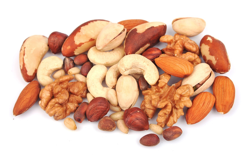
BEST Sources: almonds, walnuts, pistachios and pine nuts.
Extra-Virgin Olive Oil – Consuming only 2-3 tablespoons per day supplies lots of anti-inflammatory, heart-healthy fats, including oleocanthal, a compound that has similar properties to non-steroidal anti-inflammatory drugs, similar to ibuprofen.
BEST Source: is extra-virgin olive oil that is the first press of the olive. It goes through less processing and refining, thereby retaining more nutrients. Avocado is also a good source of healthy fats.
Fresh Fruits and Vegetables– You should aim for at least 9 servings of fresh fruits and vegetables each day. One serving = 1 cup of fruit or vegetables or 2 cups of leafy greens. Fruits and vegetables (preferably organic) are full of antioxidants that support the body’s natural defense system that help prevent free radicals (toxins, chemicals and pollutants) from attacking healthy cells. The deeper and darker the color, the more antioxidants can be found in the fruit or vegetable.
BEST Sources:
Cherries, Strawberries, blueberries, raspberries and blackberries contain anthocyanins that serve as a powerful anti-inflammatory effect in the body.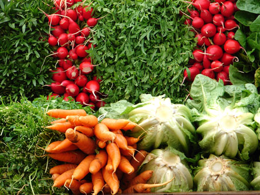
Citrus fruits such as grapefruits, limes and oranges are loaded with vitamin C that help prevent inflammation and maintains the health of arthritic joints.
Vitamin K vegetables such as spinach, kale, broccoli, cabbage and lettuce help reduce inflammatory markers in the blood.
Beans And Legumes – are loaded with phytonutrients and fiber that help lower C-reactive protein (CRP), an indicator of inflammation in the blood. Plus they are an excellent and inexpensive source of protein (15 grams per 1 cup) that offers antioxidants in just a one-cup serving and supports muscle (6).
BEST Sources: include pinto beans, kidney beans and red beans
Nightshade Vegetables – such as tomatoes, eggplant, potatoes and red bell peppers are full of nutrients, but they have been thought to have components that worsen arthritis pain; however, there is no scientific evidence that they trigger flare-ups. With that said, some people notice a relief in arthritis symptoms when they reduce or eliminate nightshade vegetables. Test yourself by eliminating them for a few weeks and see if you notice a difference in arthritis symptoms.
Add the foods listed above to your eating plan to help fight inflammation, boost your immune system and strengthen your bones. What you eat on a daily basis impacts your joints more than you may realize. Adding the foods listed above, as part of a balanced diet, will help ease the pain and symptoms of arthritis.
References:
- Centers for Disease Control and Prevention. Arthritis Statistics. <http://www.cdc.gov/arthritis/data_statistics/index.html>
- Arthritis. 2015;2015:708152. doi: 10.1155/2015/708152. Epub 2015 Feb 28.
- Reumatismo. 2009 Jan-Mar;61(1):10-4.
- Nutrition Journal. Omega-3 fatty acids status in human subjects estimated using a food frequency questionnaire and plasma phospholipids levels <http://www.nutritionj.com/content/11/1/46>
- The American Journal of Clinical Nutrition. Long-term associations of nut consumption with body weight and obesity. <http://ajcn.nutrition.org/content/100/Supplement_1/408S.abstract>
- Nutrition Journal. Bean and rice meals reduce postprandial glycemic response in adults with type 2 diabetes: a cross-over study <http://www.nutritionj.com/content/11/1/23>
Section 2:
Eating With Cancer-Related Pain
Eating healthy when you have cancer, means eating enough to keep your strength up and to prevent weight loss. Cancer treatments and cancer itself can make it difficult for the body to get the nutrients it needs from food. The body needs nutrient-dense food to help the heal quickly and to prevent infection. Eating the right kinds of foods will help you feel better before, during and after treatment.
Eating during a cancer treatment can be difficult because of the following conditions that often result:
- Mouth sores
- Nausea and vomiting
- Dry mouth
- Troubling swallowing after radiation
- Anxious feelings
- Fatigue
Depression
There are some days when eating and enjoying food is not a problem, while others have days when they do not feel well enough to eat anything at all. In fact, the thought of food can make one sick after a treatment. The following are some smart strategies for eating healthy before, during and after cancer treatment:
Make A Protein Shake – with high-quality protein, organic berries, leafy greens such as kale or spinach, Kefir (liquid probiotic) and ice.
Eat Your Main Meal Early In The Day – your appetite might be better earlier in the day as opposed to the evening hours so planning a meal when you feel your best is a good way to get the most nutrients in a meal.
Try Mini-Meals Every 3 Hours – it may be easier to eat small meals throughout the day as opposed to 3 larger meals.
Drink Plenty Of Water – water is necessary for every process in the body, especially when it comes to healing. Drinking plenty of pure, clean, filtered water is important every single day. Carry a water bottle with you – add a squeeze of lemon or lime for added flavor.
To Reduce Your Risk of Cancer
According to the National Institutes of Health (NIH), ways to help reduce cancer risks include eating more vegetables, fruits, whole grains, and legumes such as beans (1). They also recommend limiting consumption of red meat, and to avoid processed meats. Reducing your risk of cancer can be accomplished through eating plenty of plant-based foods. We should all include the following:
Cruciferous Vegetables – The 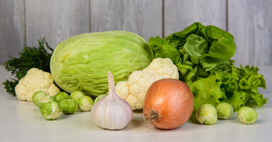 National Cancer Institute reports that cruciferous vegetables contain compounds that may help prevent cancer. They report that these vegetables have an anti-inflammatory effect, inactivate carcinogens, protect cells from damage, and inhibit tumor cell migration (2). Cruciferous vegetables include broccoli, Brussels sprouts, cabbage, cauliflower, collard greens, kale, etc.
National Cancer Institute reports that cruciferous vegetables contain compounds that may help prevent cancer. They report that these vegetables have an anti-inflammatory effect, inactivate carcinogens, protect cells from damage, and inhibit tumor cell migration (2). Cruciferous vegetables include broccoli, Brussels sprouts, cabbage, cauliflower, collard greens, kale, etc.
Food Tip: Add broccoli to salads and pizza
Organic Berries – The American Institute for Cancer Research reports that berries contain a strong antioxidant that helps to prevent cancer. Opt for eating blueberries, raspberries, and strawberries, among others, which are packed with phytonutrients. Black raspberries contain high concentrations of anthocyanins (phytochemicals) that slow down the growth of pre-malignant cells and prevent new blood vessels from forming and potentially feeding a cancerous tumor (3).
Food Tip: Add organic berries to cereal, oatmeal, smoothies, or eat on their own.
Tomatoes – are full of lycopene, a carotenoid that gives tomatoes their bright red color. Heating tomatoes helps release more lycopene for the body to absorb more powerful antioxidants for maximum benefit (4).
Food Tip: Enjoy tomatoes in a pasta sauce over whole-grain pasta.
Walnuts – contain high amounts of polyphenols, as well as other protective properties that make them a good food to help lower cancer risks (5).
Food Tip: Sprinkle them on oatmeal or salads for a delicious added flavor.
Garlic – offers so many health benefits for the heart but garlic also contains phytochemicals that can stop the formation of carcinogens in the stomach and intestines from consuming nitrates, a common food preservative. The National Cancer Institute reports that consuming higher levels of raw or cooked garlic helps to lower cancer risks (6).
Food Tip: Add crushed fresh garlic clove to a vegetable omelet or tomato sauce
Black And Navy Beans – are full of fiber and protein, and increase the levels of butyrate, a fatty acid that offers protective effects against the growth of cancer (7).
Food Tip: Add beans to a meal as a side dish or add to vegetables
What to Avoid Eating
In order to reduce your risk of developing cancer, there are certain foods that you should try to avoid to reduce your risk of cancer. The foods to avoid include:
Meat, cheese and butter – all are rich in saturated fats that are linked to obesity – a rather large predictor of cancer. Instead, choose lean protein sources such as fish, beans and chicken, and use olive oil instead of butter for cooking.
Cured Meats – tend to have nitrates and nitrites that can increase the risk for cancer, particularly stomach cancer. (8)
Too Much Alcohol – heavy alcohol drinking is a risk factor for certain types of cancer, including colorectal, as reported in the June 2015 journal Alcoholism (9).
References:
1. National Institutes of Health. Diet and Cancer. <http://www.nlm.nih.gov/medlineplus/ency/article/002096.htm>
2. National Cancer Institute. Cruciferous Vegetables and Cancer Prevention. <http://www.cancer.gov/about-cancer/causes-prevention/risk/diet/cruciferous-vegetables-fact-sheet>
3. American Institute for Cancer Research. Berries Seem to Burst with Cancer Prevention. <http://www.aicr.org/publications/newsletter/2013-spring-119/berries-seem-to-burst-with-cancer-prevention.html?referrer=https://www.google.com/>
4. Tufts University. How to get maximum health benefits from Tomatoes. <http://www.nutritionletter.tufts.edu/issues/10_7/current-articles/How-to-Get-Maximum-Health-Benefits-from-Tomatoes_1495-1.html>
5. American Institute for Cancer Research. Walnuts. <http://www.aicr.org/foods-that-fight-cancer/walnuts.html>
6. National Cancer Institute. Garlic and Cancer Prevention. <http://www.cancer.gov/about-cancer/causes-prevention/risk/diet/garlic-fact-sheet>
7. American Institute for Cancer Research. Dry beans and peas. < http://www.aicr.org/foods-that-fight-cancer/legumes.html>
8. American Institute for Cancer Research. Processed meat and cancer. <http://www.aicr.org/enews/2014/08-august/faq-processed-meat-and.html>
9. Alcohol Clin Exp Res. 2015 Jun 25. doi: 10.1111/acer.12778.
Section 3:
Fight Fibromyalgia with Food
We may all experience an upset stomach, headaches or stiff muscles, especially a day or two after a hard workout. However, there are some people who deal with pain on a more frequent basis. According to the U.S. Department of Health and Human Services, fibromyalgia causes aches and pains all over the body (1). Diagnosing fibromyalgia can be tricky, and many who have it also have other conditions, such as arthritis.
There are some things you can do that will improve symptoms such as muscle pain and fatigue. Although there has not been any specific diet proven to help with fibromyalgia, many people do report that eating or avoiding certain foods has helped them feel better. Plus, eating a healthy, balanced diet will help provide you with more energy, help you feel better in general, and also help lower risks of having other health problems (2).
Food definitely plays a role in overall health. Here are some foods, suggestions and tips that will help alleviate fibromyalgia symptoms:
Keep A Daily Food Journal – this will help you identify certain foods that might contribute to pain in the body. It could be a food with preservatives, gluten, eggs, dairy, MSG or other common allergens.
Make Note Of How You Feel – after each meal in your journal, make note of how you feel. Symptoms tend to get worse after eating certain foods. It could be fatigue, headaches or indigestion.
If You Suspect A Certain Food – eliminate the suspected food from your eating regiment for at least 6 weeks. Add it back and make note of how you feel. When you try adding the food back in, notice how you feel. If your symptoms return, or you have other ones arise, you may need to eliminate that food from your diet.
Eat Plenty Of Fruits, Vegetables, Whole Grains And Lean Protein – a well-balanced diet will give you more energy that will improve your overall health.
Seek Healthy Foods That Do Not Require Much Preparation – the produce section often has fresh produce cut up and ready to go. Look for healthy salads, beets, quinoa and other healthy foods.
Eat Small Meals Throughout The Day – this will give you more consistent energy. Think protein and fiber.
Avoid Skipping Breakfast – enjoy and egg and some oatmeal. Notice how you feel after you eat breakfast. Eating breakfast will prevent blood sugar from spiking and will give the right amount of energy.
Get Enough Sleep – aim for at least 8-9 hours of sleep each night. This will help reduce symptoms of pain during the day.
day.
Find A Tai Chi or Yoga Class – these are wonderful exercises for reducing symptoms of pain in the muscles and joints. Connecting breath with the movements helps release pain from the body. The National Fibromyalgia Association reports that complimentary therapies can be very beneficial (3).
Eat Good Fats – found in cold-water fish, walnuts, avocados and nuts. All of them reduce inflammation in the body and are part of the Mediterranean diet.
Eat Lean Protein – reduce processed carbohydrates and enjoy lean protein at every meal.
Avoid Caffeine – when feeling exhausted, many people turn to caffeine for a boost, but it makes symptoms worse, interferes with sleep and perpetuates the fatigue. Eat a piece of fruit with some nut butter for energy, fiber, protein and good fats.
Avoid White-Flour Carbohydrates – such as white bread and sugar products that generate increased sensitivities to blood sugar highs and lows.
Eliminate Artificial Sweeteners – anything that is chemically based can be hard on those dealing with fibromyalgia.
Eating more whole foods that are high in fiber, rich in phytochemicals and antioxidants, and low in calories, works well for those that need to lose weight, are dealing with autoimmune disorders or irritable bowel syndrome (IBS) – all common conditions among those dealing with fibromyalgia. Plus, whole natural foods do not contain additives, fillers, colorings, and preservatives that may aggravate fibromyalgia symptoms. It’s worth making improvements to your diet and paying attention to see if there are certain foods you can eliminate that help you feel better.
Resources:
1. U.S. Department of Health and Human Services. Fibromyalgia fact sheet. <https://www.womenshealth.gov/publications/our-publications/fact-sheet/fibromyalgia.html>
2. U.S. Department of Health and Human Services. Fibromyalgia fact sheet. <https://www.womenshealth.gov/publications/our-publications/fact-sheet/fibromyalgia.html>
3. National Fibromyalgia Foundation. Treatment. <http://www.fmaware.org/about-fibromyalgia/treatment/>
Section 4:
Avoiding Headaches
One person might eat a ham and cheese sandwich and end up with a migraine headache soon after eating it. Another might experience vision trouble, loss of balance or nausea. According to The National Institutes of Health (NIH), dairy foods are one of the most common types of migraine headache triggers (1). The culprit in aged cheese is tyramine, a substance that forms when protein is broken down in certain foods.
Here is a list of cheeses to avoid if you are prone to headaches:
• Blue cheese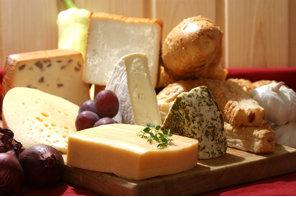
• Brie
• Cheddar
• Feta
• Gorgonzola
• Mozzarella
• Muenster
• Parmesan cheese
• Processed cheese spreads
• Swiss
In addition to cheeses, there are additional foods you should limit or avoid eating, which include pickles, processed meats, olives, onions, beans, raisins, avocadoes, red wine and canned soups. While many people do not want to give up wine, choosing a white wine as opposed to red wine may also be a better option for those who get headaches.
More Foods to Avoid
Food Additives – food containing nitrites can trigger headaches by increasing blood flow to the brain with changes in blood vessels, triggering a headache. Headaches triggered by these additives are usually felt on both sides of the head, however they often disappear when the substance is eliminated (2).
Ice Cream – if you are prone to migraine headaches, ice cream should be avoided as it can trigger a full-fledged headache or migraine due to the coldness.
Cold Drinks – just like ice cream, cold drinks can also trigger a headache and should be avoided if one is prone to migraine headaches. Research has shown that even drinking cold water is common in women (3).
Smart Strategies for Avoiding Headaches
Avoid Skipping Meals – One of the most important strategies for avoiding headaches is not skipping meals. Eating healthy foods at regular times (every 3-4 hours) helps stabilize blood sugar. If one goes too long without food, blood sugar drops and a headache can result. By eating at regular times throughout the day, one can treat the cause of a headache rather than the symptom. According to a study in the October 2013 issue of Current Pain and Headache Reports, fasting and skipping meals are well known migraine triggers (4).
Experiment With A Specific Food – if headaches begin after eating a meal, sometimes it can be difficult to determine which food is to blame. One way is to take some time to eat a food that might be in question and wait for any reaction, specifically a headache.
Keep A Headache Journal – it allows you to pinpoint connections between what you are eating and any headache that results. It helps you to see any patterns that might show up and figure out foods to avoid. Be diligent in writing down everything you eat and drink, especially any food that contains the following:
• Artificial sweeteners
• Chocolate
• Aged cheese
• Caffeine
• Meat tenderizer
• Nuts
• Yeast
• Red wine or beer
• Processed meats
• Dried fruits
• Breads and crackers containing cheese
• Canned soup
What to Eat to Avoid Headaches
Quinoa, Mushrooms and Asparagus – all of these foods are high in riboflavin or vitamin B2 that can help reduce the occurrence of migraine headaches (5). Plus, riboflavin boosts the metabolism in the brain, helping you to maintain good energy levels.
Eat Your Spinach – and Swiss Chard – they will give you plenty of magnesium that helps to calm your nerves. Sunflower seeds, bananas and sweet potatoes are also good choices.
Tuna, Mackerel, Organ Meats, Nuts, Broccoli and Cauliflower – are full of co-enzyme Q10 that protect the body from stress-induced free radicals as well as the cells in the body. They contain powerful antioxidants that support the mitochondria in the cells that can help prevent headaches (6).
Enjoy Water-Rich Fruits – such as grapefruit, strawberries, cantaloupe, pineapple and watermelon that will help keep you hydrated. Dehydration can lead to headaches so it is important to stay hydrated and drink plenty of water.
References:
1. National Institute of Health. Migraine. http://www.nlm.nih.gov/medlineplus/ency/article/000709.htm
2. National Institute of Health. Migraine. http://www.nlm.nih.gov/medlineplus/ency/article/000709.htm
3. Cephalalgia. 2001 Apr;21(3):230-5.
4. Current Pain and Headache Reports. 2013 Oct;17(10):368. doi: 10.1007/s11916-013-0368-1.
5. Canadian Family Physician. Effectiveness of riboflavin in pediatric migraine prevention. <http://www.cfp.ca/content/60/3/244.full>
6. U.S. Library of Medicine. Coenzyme Q-10. <http://www.nlm.nih.gov/medlineplus/druginfo/natural/938.html>
Section 5:
Prevent Low-Back and Neck Pain with Food
The old saying, “You are what you eat” holds true. There are specific foods that help reduce inflammation throughout the body, particularly the low back as well as the neck. What you eat can help you avoid pain in the back as well as the entire body. You can create an anti-inflammatory eating plan that will help you battle back pain. If you are prone to low-back pain or neck pain, you should focus on the following foods:
Bright-colored Fruits and Vegetables – they are full of antioxidants and help reduce inflammation, and more notably do not create inflammation in the body. Good choices include sweet potatoes, cherries, berries, grapes, pomegranate and watermelon.
The Greener – The Better – vegetables like kale, dark leafy greens and broccoli are all powerful anti-inflammatory vegetables.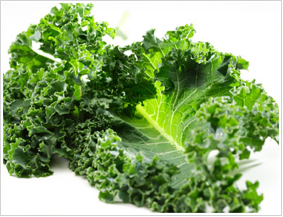
Ground Flaxseeds Or Chia Seeds – these plant-based wonders are your best bet for avoiding inflammation (1). Add them to the blender for a protein smoothie or sprinkle them on salad or vegetables for added benefits. Make sure they are ground flaxseeds so your body will have access to the nutrients in them.
Salmon, Sardines Or Mackerel – are full of Omega 3 essential fatty acids that also help reduce inflammation in the body (2).
Herbs And Spices – help flavor foods while reducing your salt intake and are rich in anti-inflammatory agents. For savory dishes, choose from basil, rosemary, garlic, oregano, onions, turmeric and ginger. For example, the key ingredient in turmeric is curcumin, which gives it the yellow color, as well as serves up plenty of anti-inflammatory properties. A May 2015 study in the journal Molecules, reported that curcumin can play a key role in the prevention and treatment of chronic inflammation diseases (3). Cinnamon is also an excellent spice to add to your morning coffee that helps stabilize blood sugar levels and can help you use less sugar.
Healthy Herb Teas – green, white and oolong are full of anti-inflammatory antioxidants. The polyphenols in tea can help fight inflammation, according to the Arthritis Foundation (4).
Olive Oil – is an excellent oil to use for cooking and making your own salad dressing at home for an anti-inflammatory ingredient that is sure to please any palette.
Bright-colored fruits and vegetables have been proven to reduce inflammation in cartilage in the spinal column that helps to control stiffness and back pain.
Avocadoes And Nuts – are rich in essential fatty acids that can be part of an anti-inflammatory eating plan. Walnuts, pecans, almonds and Brazil nuts are all good choices. Frequent nut consumption has been associated with the reduction of inflammation markers (5).
Lean Protein – such as chicken and turkey have less saturated fat than other protein sources like high-fat meats that can create inflammation in the body.
Foods To Avoid To Prevent Low Back Or Neck Pain
When it comes to nightshade vegetables such as eggplant, tomatoes, white potatoes and peppers, many people are told to avoid these vegetables as part of an anti-inflammatory diet. However, you can determine if these vegetables bother you or cause pain in your back or neck by eliminating them for two weeks. Make note of how you feel or if you notice if any pain or symptoms go away.
Processed foods should be avoided including fast food and foods that are high in saturated fat, especially foods with hydrogenated oils. These foods fuel inflammation such as:
• White bread
• Pasta
• Soft Drinks
• Snack foods
• Fried foods
• Caffeine
• Alcohol
• Chips
• Crackers
• Pastries
Hydrogenated oils are also found in many foods and should be avoided. Instead, choose olive oil when cooking or for making salad dressing. Hydrogenated oils preserve the shelf life of the product but they do nothing for your shelf life (5).
The Calcium Component
One of the best ways to prevent or eliminate back pain is to make sure you are getting enough of the right nutrients. Maintaining bone mass is critical for preventing osteoporosis which can weaken the vertebrae in the spine. The National Institutes of Health (NIH), recommends that the average adult get around 1,000 mg/day of calcium (6).
Studies show that taking too high a dosage of calcium can increase your risk for atherosclerosis (plaque formation in the arteries) and heart problems. In fact, consuming too much calcium can cause bone fractures. Of course, it is best to get the calcium you need from food sources such as milk, yogurt and cheese as well as dark leafy green vegetables. Weight bearing exercise also helps keep bones strong and healthy.
References:
1. University of Maryland Medical Center. Flaxseed. <http://umm.edu/health/medical/altmed/herb/flaxseed >
2. University of Maryland Medical Center. Omega-3 fatty acids. <http://umm.edu/health/medical/altmed/supplement/omega3-fatty-acids>
3. Molecules. 2015 May 20;20(5):9183-9213.
4. Arthritis Foundation. A Cup of tea can be good for your health. <http://www.arthritis.org/living-with-arthritis/arthritis-diet/best-foods-for-arthritis/tea-benefits.php>
5. Asia Pac J Clinical Nutrition. 2008;17 Suppl 1:333-6.
6. Harvard School of Public Health. Shining the spotlight on transfats. <http://www.hsph.harvard.edu/nutritionsource/transfats/>
7. National Institutes of Health. Bone health for life. <http://www.niams.nih.gov/health_info/bone/bone_health/bone_health_for_life.asp
Section 6:
Chronic Neuropathic Pain Conditions
Chronic neuropathic pain conditions are a frequent issue for those with Type 2 diabetes, causing pain, numbness and burning. Many turn to antidepressants and medications to relieve nerve pain, however they have adverse side effects. Just as with other health conditions, many people are turning to diet and nutrition for alternative ways to combat chronic neuropathic pain.
In a May 2009 issue of Nutrition Reviews, they reported that vegetarian and vegan diets offer significant benefits for diabetes management (1). In another study in The Journal of Clinical Nutrition, half of the group was placed on a low-fat, vegan diet with vitamin B12 supplements while the other half continued their normal diet with vitamin B12 supplement (2). Those consuming the vegan diet saw improvements in:
• General health 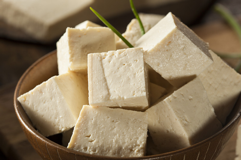
• Lower blood pressure
• Weight loss
• Slowed or halted nerve function decline
• Pain relief
A vegan diet does not include any animal products. This means someone on a vegan diet does not consume eggs, dairy, or any other foods that come from animals. Vegans get their protein from such sources as beans, legumes, nuts, tofu, vegetables, tempeh, etc. The nutrients to be concerned with for those on a vegan diet are vitamin B-12, and omega-3 fatty acids.
These nutrients can be found in particular foods, fortified food options, or supplements. Here are some things to remember for eating a vegan diet:
• Look for soy or rice milk in vitamin B12 fortified options
• Ingest enough calcium through eating kale, bok choy, collard greens and broccoli
• Sunflower seeds and dried figs are high in calcium, too
• Get protein from soy products such as tofu (preferably organic ones)
• Eat a variety of fruits, vegetables and grains
• Enjoy beans and legumes 
• Additional main staples to consider include steel-cut oats, leafy greens and lentils
The benefits of a vegan diet include:
➢ Protective gut microbiota (3)
➢ Protection against cardiovascular disease, some cancers, and mortality (4)
➢ Lower risk of obesity, hypertension, type-2 diabetes (5)
➢ Improvements in physical and mental health (6)
A study in the November 2014 issue of Nutrients, also found that those with a vegan diet had reduced levels of inflammation, which provided protective health benefits (7). A healthy vegan diet is one that is comprised of fruits, vegetables, whole grains, nuts, seeds, etc. Because it is plant-based, it is typically loaded with antioxidants, fiber, and nutrients.
References:
1. Nutrition Reviews. 2009 May;67(5):255-63. doi: 10.1111/j.1753-4887.2009.00198.x.
2. American Journal Clinical Nutrition. 2009 May; 89(5): 1588S–1596S.
3. Nutrients. 2014 Oct 31;6(11):4822-38. doi: 10.3390/nu6114822
4. Nutrients. 2014 May 27;6(6):2131-47. doi: 10.3390/nu6062131.
5. Nutrients. 2014 May 27;6(6):2131-47. doi: 10.3390/nu6062131.
6. Journal of the American College of Nutrition. 2015 Apr 27:1-11.
7. Nutrients. 2014 Nov; 6(11): 4822–4838.







